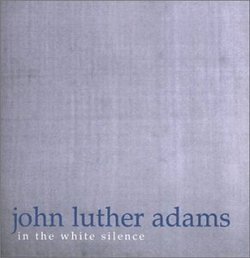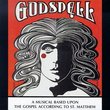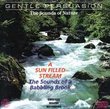| All Artists: Oberlin Contemporary Music Ensemble Title: John Luther Adams - In the White Silence Members Wishing: 4 Total Copies: 0 Label: New World Records Release Date: 4/29/2003 Genre: Classical Style: Symphonies Number of Discs: 1 SwapaCD Credits: 1 UPCs: 093228060024, 093228060024 |
Search - Oberlin Contemporary Music Ensemble :: John Luther Adams - In the White Silence
 | Oberlin Contemporary Music Ensemble John Luther Adams - In the White Silence Genre: Classical
Since 1978, Alaska has been John Luther Adams s (b. 1953) home and a major inspirational source for most of his compositions. Almost all of his compositions evoke natural phenomena, in particular the wintry Northern landsc... more » |
Larger Image |
CD DetailsSynopsis
Product Description Since 1978, Alaska has been John Luther Adams s (b. 1953) home and a major inspirational source for most of his compositions. Almost all of his compositions evoke natural phenomena, in particular the wintry Northern landscapes, light, and colors as well as elements of indigenous Alaskan cultures. Adams s music thus shares aesthetic features with nature-inspired works of such composers as Debussy, Ives, Sibelius, and Hovhaness. Due to the use of certain "minimalist" strategies Adams s music is often classified as "minimalist" or "post minimalist." He avoids expressive musical rhetoric, prefers reduced and elementally simple musical material, and frequently uses sustained tones and static textures. Adams s compositions embrace just intonation, consonance, and modal harmony, and they often feature a meditative quality and extended length reminiscent of Feldmanesque dimensions. Like many of Adams s previous works, In the White Silence (1998) is an example of his concept of "sonic geography," through which he attempts to realize the notion of music as place and place as music and reveals his obsession with the "treeless, windswept expanses of the Arctic." The title of the work thus points to Alaskan landscapes in a general sense. And like Dream in White on White, it specifically refers to Adams s fascination with the color of white, a dominant feature of Arctic landscapes. As Adams explains in his preface to the score: "White is not the absence of color. It is the fullness of light. As the Inuit have known for centuries, and as painters from Malevich to Ryman have shown us more recently, whiteness embraces many hues, textures, and nuances." In the White Silence slowly unfolds over the course of about seventy-five minutes. The work s extended length and non-dramatic structure suggest the idea of music as an "immeasurable space" and reflect the desire to transcend the conventional boundaries of musical composition. In the White Silence, a large-scale work of structural refinement, balance and arresting beauty, gently envelops the listener and thus becomes a "musical presence equivalent to that of a vast tundra landscape." Similarly Requested CDs
|
CD ReviewsAstounding, life-changing beauty Glenn Becker | Arlington, MA USA | 12/04/2004 (5 out of 5 stars) "This music might not be to everyone's taste. The piece is 75" long and in some ways it could be said that it does not really "go" anywhere. It attempts on one level to evoke an arctic landscape -- which can appear monotonous, too, to eyes not used to really looking. But to these ears, weary of election-year arguing and backbiting and invective and the minutiae of work and personal life, this is the most searingly beautiful, tear-evoking music I have heard in a long, long time. I cannot comment on this music in a formal or musicological fashion because I don't have the training. All I can say is that this piece (and its realization here) is like an hour and a quarter of sheer, boundless radiance. If the light off snow could be heard it would sound like this. It is less like being inside a bell than like being the bell itself. Please, please listen to the music of John Luther Adams and begin to ring. I'll be snapping up everything I can find by this amazing American composer." As It Was in the Beginning, Is Now, and Ever Shall Be Nicholas Croft | New York | 11/09/2003 (5 out of 5 stars) "John Luther Adams conceives his musical compositions in a small one room cabin studio, located deep in the snow covered woods, near Fairbanks, Alaska. He has spent many years in that simple room, in hermit like solitude, contemplating the stark beauty of his surrounding landscape. A pregnant form of pantheistic spirituality, successfully transmitted within this delicate recording, comes gradually to those nurturing an interior life amidst such an isolated, pristine setting. Perhaps, it is through his deeply contemplative nature, combined with the commitment of decades of compositional exploration, that Mr. Adams has become one of the leading voices of natural beauty within the artic regions.In the structural center of 1998's "In the White Silence", a string quartet, celeste, harp and vibraphone each transmit echoes of a cleanly resonant luminosity, amidst sensual drone like clusters of sustained string work. In these lush sustained string clusters, the listener is drawn gently into the spirit of the work's intoxicatingly ethereal presence.As the poetic title of the piece implies, the work is about the experience of silence. About realms beyond the inadequacy of words. Words are, at best, only pointers to complex realities and the feelings that such realities give rise to. Indeed, one can see that Mr. Adams has maintained a consistency of theological aesthetic in the past few years, as is evident on his 1997 recording "Clouds of Forgetting, Clouds of Unknowing".In the beginning, there was an empty silence. And that silence was infused with a lonely, yet radiant, spiritual presence. We can, if we wish, come to be one with her and her longing, through and with this inspired music. It is a quietly passionate mystical letter, sent with abandon to all, in a darkly mysterious time."
|

 Track Listings (1) - Disc #1
Track Listings (1) - Disc #1








